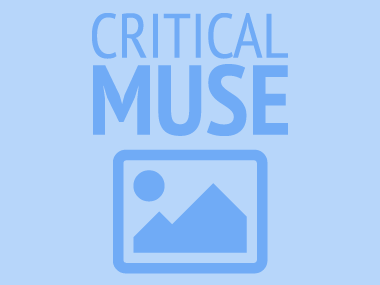Punchdrunk – immersive theatre to the max, The Drowned Man
20th June 2013
Punchdrunk: plunge into a world of extraordinary theatre
Punchdrunk, pioneers of the ‘immersive theatre’ phenomenon, are back with their biggest show yet: The Drowned Man.
First published in the Daily Telegraph, 20 June 2013.
How on earth did I miss it? Although it’s set to one side of Paddington Station, the former Royal Mail Sorting Office on London Street, W2 isn’t difficult to spot. It’s a substantial Edwardian red-brick building, ranged across four storeys. And yet while I must have passed it hundreds, possibly thousands of times, I can’t say I’d registered it until now. Didn’t notice those windows were boarded up. Didn’t stop to think that this might make the perfect venue for a piece of immersive theatre – let alone wonder what Punchdrunk, the game-changing company who’ve done more to catapult this kind of work into the heart of our culture than any other, would make of it.
The announcement in May that Punchdrunk would be unveiling their first major London show for six years, and biggest to-date, on these premises has drawn my attention to the site and galvanised my curiosity as to what they’re going to get up to. But beyond knowing that The Drowned Man: A Hollywood Fable will transport its intrepid audiences to a mock-up derelict film studios from the 1960s, that it’s inspired too by Buchner’s fragmentary masterpiece Woyzeck (1837), and has a running-time of up to three hours depending on each visitor’s staying-power, I’m still little the wiser as to what the evening entails.
And that’s the way its co-directors Felix Barrett and Maxine Doyle want it. Surprise is of the essence in their transformative brand of theatre – and key to this burgeoning genre’s impact. In their view, in a world where so much is an instantly known commodity, not knowing what’s round the corner or how you’ll react when you find it isn’t just an added boon, it’s invaluable.
When I started theatre-reviewing for the Telegraph back in 2000 – by coincidence the year that Barrett founded Punchdrunk, after studying drama at Exeter University and growing in dissatisfaction at conventional auditoria – the buzz-phrase “immersive theatre” wasn’t in currency. The slightly arid talk was of “site-specific theatre”, a term already cloudy with imprecision. It sort of meant “theatrical things taking place in unusual, often unoccupied locations with the audience up on their feet, playing a participatory role”, but didn’t always involve a cast-iron commitment to the space’s ambience or history.
This species of fringe enterprise could lay claim to honourable antecedents. One might look back to the 1960s and 1970s and the hippy fad for pop-up happenings, the emergence of “installation art” as a category, and the work of Peter Brook, whose pioneering 1968 text “The Empty Space” issued a clarion-call to recognise that anywhere, indoors or out, can be a “theatre”.
In the 1990s, other notable directors tested the possibilities of scouting for unusual locations and letting select numbers of people roam through their responses to them – chief among them American avant-gardist Robert Wilson and Deborah Warner, the latter creating ghostly apparitions in the former St Pancras hotel and celestial imagery in derelict offices at Euston Tower (1999).
By the turn of millennium, alongside a growing sense that theatre needed to answer the adrenalin rushes available to the younger generation in the wake of rave culture and thanks to advances in gaming technology, there were inklings of what was about to happen. But this form of work still languished on the margins. Even when a new company as visionary and visceral as Shunt came along – occupying railway arches in East London then under London Bridge – elaborately wrought excitements were treated rather as a diverting sideshow.
Then the Punchdrunk phenomenon happened. Barrett and his team – primarily hundreds of volunteers – staked a claim to an impossibly grand scale with minimal resources and pulled off their meticulously devised interventions in a style that had everyone, including those in the subsidised sector, gasping. The break-through shows were 2006’s Faust – occupying five floors of a Wapping warehouse – and, a year later, The Masque of the Red Death, which used every nook and cranny of the Battersea Arts Centre in its epic distillation of Edgar Allan Poe.
A scene from Punchdrunk’s production at the Battersea Arts Centre, Masque of the Red Death, an immersive theatre experience inspired by Edgar Allen Poe’s short stories
In each case, the audience – required to don anonymous face-masks, in a Punchdrunk signature – were plunged into worlds so ingeniously textured that two friends might separate for the evening and, the more receptive and curious the better, report back with a different set of experiences. Suddenly only a word like “immersive” did justice to the full-on nature of the event.
One immediate convert was the National’s director Nicholas Hytner, who caught the Punchdrunk bug earlier than most in 2005, in a disused south London factory, at The Firebird Ball, inspired by Romeo and Juliet and Stravinsky’s The Firebird. “I was suspicious when I was made to put on my white mask,” he remembers. “Maybe I was right to be. It turned out to represent the polar opposite of everything I’ve ever been able to do in the theatre and I was totally exhilarated – high on every moment of it.” Hytner’s decision to have the National endorse and support the company, combined with the lucrative success of another early show – Sleep No More, based on Macbeth, which has become a cult long-runner in New York – has helped give Punchdrunk the logistical clout required to occupy 200,000 square feet of abandoned space in Paddington.
Barrett prefers the word “site-sympathetic” to “immersive”. This elfin-like 35-year-old, an otherworldly figure with his long straggly hair and beard, takes pains not to impose the company’s work on the spaces he finds, he says. As he wanders around a potential site alone, sizing it up, “The building tells you the show it wants to have inside it,” he explains. He might be inspired by something as subtle as “a smear on the wall that looks like a handprint”.
Laying aside arguments about categorisation, Punchdrunk can still be said to be leaders of the “immersive” pack – which now encompasses companies as diverse as dreamthinkspeak, Look Left, Look Right and You Me Bum Bum Train – a headline-grabbing 2010 project which, like a mad theme-park ride, hurtled solo participants through a maze of surprise scenes they were required to act in.
Some of this stuff is a little scary. Some of it, by companies that need no naming and shaming, is quite lousy. Barrett, almost a victim of his own success – “There are now battles going on in the streets of London for prime real-estate,” he jokes – knows how difficult it is to get things right, and to make the experience as artistically meaningful as it is all-round pleasurable.
“The work that has proper rigour, craft and process is excellent. The work that plays with the trickery of taking an audience out of its comfort zone is weaker – it’s about quality control,” he says. Wherever they go next, and there are even bigger plans in store, Punchdrunk have gone far beyond the fringe, he observes. That’s certainly true now of the ticket-prices – unless you’ve wangled a concession, you won’t get much change out of £50. The ethos, though, remains about mind-blowing art not wallet-emptying commerce: “We aim to provide the quality of the West End while avoiding packing the audiences in like sardines,” he continues, stressing that, as a charity, the company ploughs the money it makes back into the mission. And that’s at once fiendishly simple and tough-as-hell to carry off. He beams. “We want to give people something they haven’t seen before.”



Dominic Cavendish is the lead theatre critic for The Daily Telegraph. He is the founding editor of the audio archive Theatrevoice
I'll let you know by email whenever I add new content to the site:
Twitter cannot show tweets right now. Please try again.
Follow @domcavendish